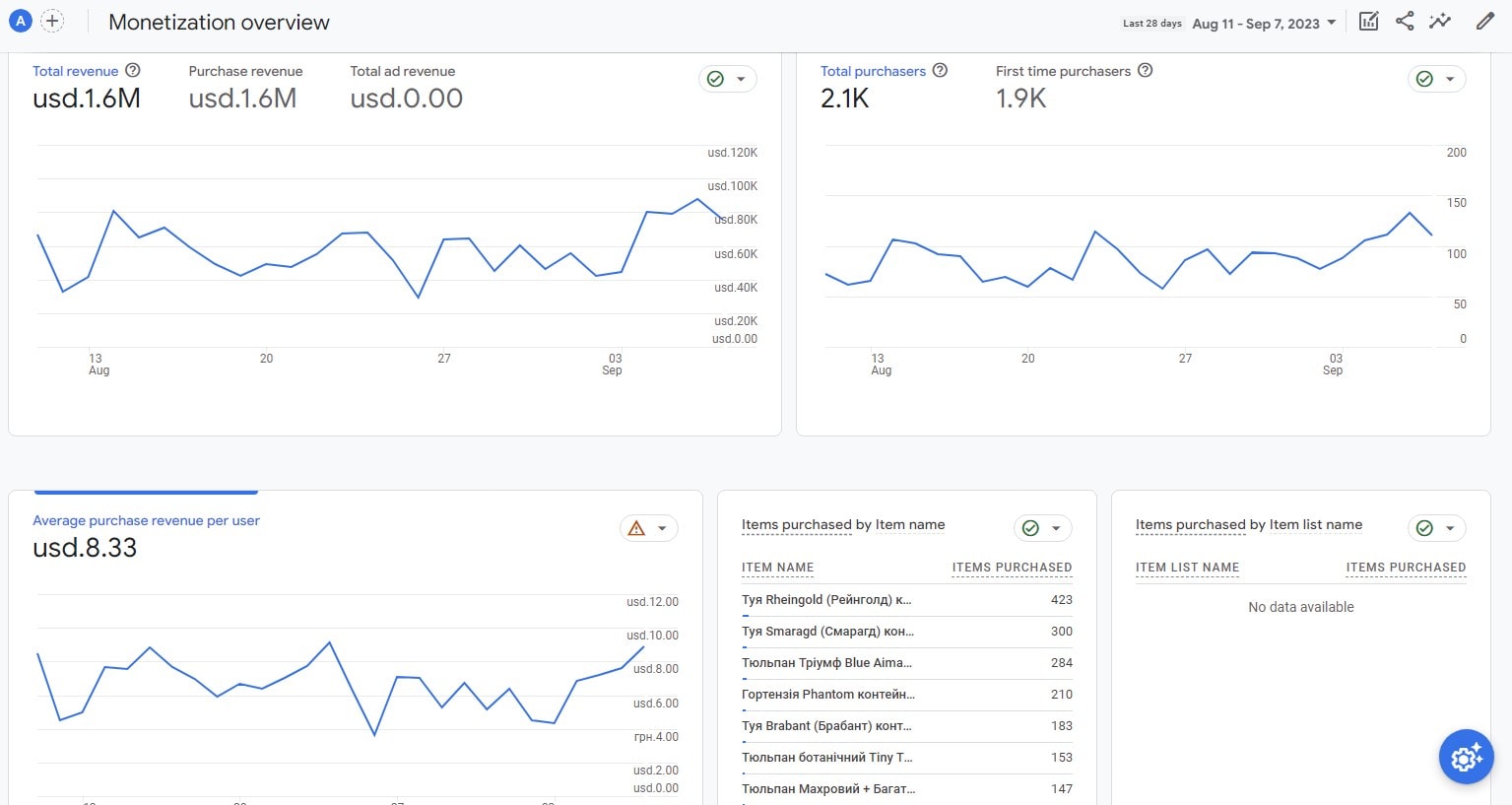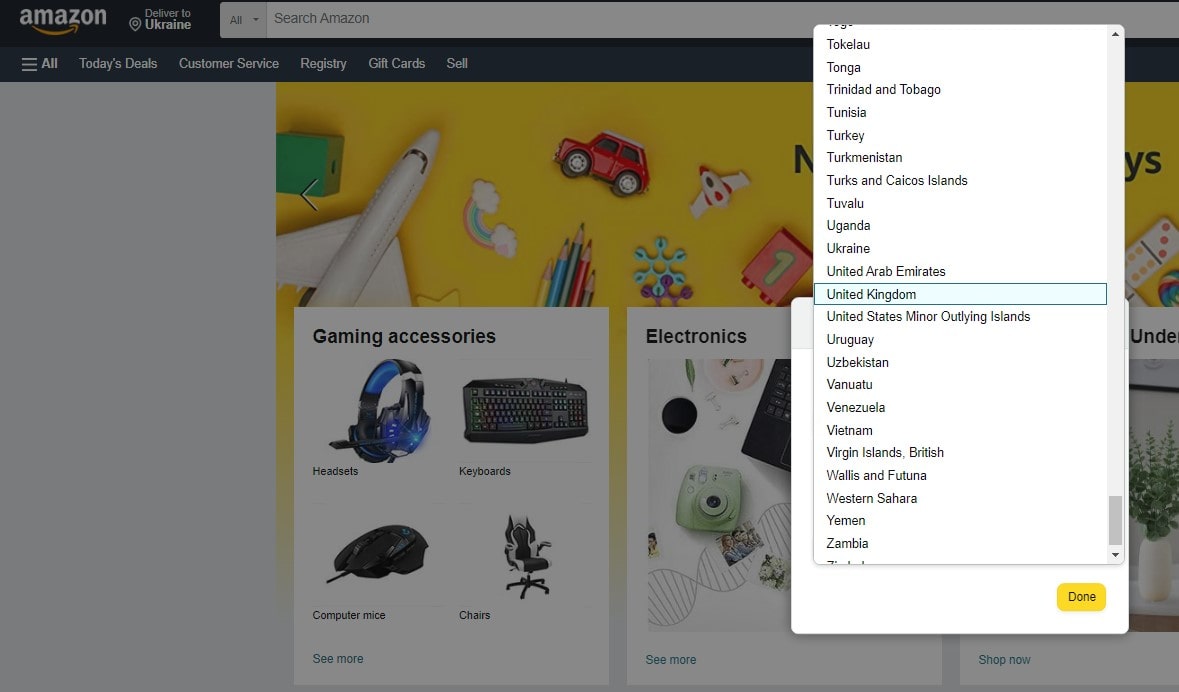Every successful firm is built around having well defined objectives. Determining your business objectives can be the difference between a precision-scaled expansion and a meandering launch of a startup. This page explores in detail:
- Measurable objectives producing income
- Action Plans promoting brand loyalty
- Objectives geared at long-term viability
Setting objectives is about practical plans that produce outcomes in the actual world, not just wishful thinking. These twelve excellent business objectives will help you to define the course for your organization. And by the way, think about using the Plerdy tool to turbocharge your objectives with excellent CRO & UX. Is this the push your business needs to match every objective to observable results? Enter and learn the road map to objective success!?
Importance of Setting Business Objectives
Having well defined business objectives helps your business succeed in the huge ocean of commerce, much like a compass. Without well defined objectives, your company may become lost in the erratic waves of market forces.
Think of these three main reasons to establish business objectives:
- Managing Operational Effectiveness: A carefully stated objective gives your company’s operations direction. Consider a tech start-up whose mission is to improve user experience; every team, from programming to design, coordinates its efforts to this end.
- Encouraging Staff: Well defined objectives inspire staff members. When a retail chain wants to grow, it gives its staff a clear objective to work toward.
- A yardstick to measure your success is provided by business objectives. For example, a monthly active user objective-oriented e-commerce site can easily monitor growth and adjust its strategy.
Still, establishing objectives by themselves is insufficient. The secret is to create SMART (Specific, Measurable, Achievable, Relevant, and Time-bound) objectives. One well-written SMART goal that eliminates any room for doubt would be for an organic food supplier to “increase annual revenue by 15% through online sales within the next financial year”.
Setting specific business objectives is, all things considered, like laying out a map: it gives your team direction, motivates them, and tracks the distance traveled. When you have such strong advice at your fingertips, why stray when you can sail boldly toward achievement?
Key Elements of Effective Business Objectives
Reading the compilation of “12 Business Objectives Examples,” it is clear that every aim acts as a compass to direct the business toward its overall objectives. These goals, which combine short- and long-term goals, are what keep the business plan together. It is critical to closely examine, adjust, and measure these key indicators because failing to pay them enough attention can make or ruin your business endeavours.
Business Objective #1: Increase Sales Revenue

An all-encompassing business objective, increasing sales revenue is what keeps every commercial endeavor alive. Reaching this objective needs careful preparation and execution. Let us explore tactics that promote increase in revenue.
Three key approaches to increase sales revenue are:
- Cross- and upselling: Get the most out of current clients. A fitness establishment could cross-sell by pushing health supplements with memberships or upsell by providing upscale services.
- Diversification: Release unrealised sources of income. A clothing firm might branch out into accessories to improve their line and increase income sources.
- Improving the Experience of the Customer Return business comes from happy customers. High-quality service restaurants are more likely to get return business and good word-of-mouth, which increases sales.
Maximizing WordPress SEO with Google Analytics is like sailing with a laser-guided compass. Never forget that the value you add to the market is reflected in the money you make. Selling product is not the only objective of your business as an organic food provider; other objectives include encouraging sustainability, quality control, and healthy living. As such, increasing value for your clients should be the main objective of every business move you make in order to boost sales revenue. Even if the road may be difficult, it is worth it when you witness your income increase.
Business Objective #2: Improve Customer Satisfaction
Enhancing client happiness is not only a nice-to-have in a competitive market; it is a vital business objective that may make or break your business success. Repeat business, good word-of-mouth, and a better brand image are all results of happy customers.
Give three main approaches to improving customer satisfaction as a corporate objective some thought:
- Delivering Quality Products and Services: To wow its clients and promote happiness, a software development company, for example, should give priority to efficient, bug-free software.
- Outstanding Customer Service: A hotel or other hospitality business could concentrate on training its employees to guarantee prompt and polite answers, going above and beyond to make visitors feel important.
- Customization: To give customers individualized buying suggestions and to make them feel important and understood, an online retailer might spend in sophisticated algorithms.
Recall that maintaining client pleasure requires constant effort rather than one-time work. Every touchpoint—from the time a consumer first contacts your company until the end of their buying process—offers a chance to exceed expectations and increase satisfaction. It is imperative, though, to surpass rather than only satisfy expectations. For example, a vehicle repair facility guarantees a seamless, hassle-free, and open service, putting clients at ease and secure in their decision. You will find that your business not only survives but thrives in the market if you keep putting client happiness at the center of your objectives.
Business Objective #3: Market Expansion

Companies hoping to grow and take up more market share have a difficult business objective in market expansion. That’s a calculated move that might boost sales, clientele, and brand awareness.
Three methods are presented here to promote market expansion as a corporate objective:
- Geographic Expansion: To reach a larger audience with their distinctive food, a restaurant chain, for example, would want to build new sites in several cities or countries.
- Targeting New Consumer Segments: A high-end fashion business might launch a low-cost line aimed at consumers on a tight budget, therefore reaching a new market.
- Increasing Product or Service Range: To increase its market share, a skincare company can add haircare products to its product line.
Starting a market expansion project as a corporate objective needs careful consideration and preparation. It’s about knowing the little details of the new market—their wants, likes, and problems—and adjusting your product to fit. Consider an instructional tech platform. It goes beyond simply providing online courses to include knowing the target audience’s preferred learning styles, technological accessibility, and learning needs. Such knowledge allows the platform to customize its courses and user interface to the particular requirements of the larger market.
Market expansion is, in the end, a fascinating but difficult business objective with lots of chances for development and creativity. Taking this road calls for flexibility, smart planning, and an unwavering attention to satisfying client needs.
Business Objective #4: Enhance Brand Recognition
One important commercial objective is to increase brand recognition. In the minds of the customer, this endeavor leaves a strong basis for trust and loyalty.
Three approaches are presented here to improve brand recognition as a commercial objective:
- Consistent Branding: For example, a sports footwear company may make sure that its logo, colors, and message are the same on social media and on product packaging, so promoting quick recognition.
- Animated Marketing Campaigns Viral marketing initiatives that connect with their target demographic could be used by a tech start-up to initiate discussions and increase brand exposure.
- CSR (Corporate Social Responsibility) Programs A global business may become known as a responsible and caring brand by supporting local communities or aligning with environmental sustainability efforts.
Recognition of your brand is about the emotions, impressions, and experiences it arouses, not just its logo and colors. Consider a maker of high-end vehicles. They are marketing a prestige, power, and luxury experience as much as automobiles. This brand image is painstakingly reinforced in every advertising campaign, consumer interaction, and product introduction.
Making sure every touchpoint supports the business objective of brand recognition and adds to a unified brand image is an unrelenting task. Recall that each contact with a customer offers a chance to strengthen the identity and increase awareness of your brand. Enhancing brand recognition successfully calls for strategic thought, originality, and a steadfast dedication to the main principles and objectives of your business. Reaching this commercial objective will help you to stand out from the competitors and increase your market share.
Business Objective #5: Reduce Operational Costs

Most companies give reducing operational expenses first priority in order to boost earnings. This business objective is to increase productivity, simplify processes, and make calculated choices to reduce needless costs.
Give these three approaches some thought if you want to lower operating expenses as a business objective:
- Putting Technology Solutions into Practice: A logistics company might, for example, use automated routing software to maximise delivery routes, therefore reducing fuel and time expenditure.
- Outsourcing Non-Core Activities: To concentrate on their main business and cut operating expenses, a software development business could contract out auxiliary jobs like customer service or payroll processing.
- Lean Management Practices: By locating and removing waste from its operations, a manufacturing company can increase productivity and cut expenses.
Cutting corners is only one aspect of lowering operating expenses; another is making wise, calculated choices that increase productivity without sacrificing quality. For example, an online retailer does more than just ship and pack goods. Its objective is to maintain cost containment while providing a smooth purchasing experience. Operating expenses can be cut without sacrificing customer satisfaction by the business investing in affordable packaging, obtaining better shipping rates, and streamlining warehousing procedures.
Recall that every cent saved on running expenses immediately increases your profitability. This corporate objective has to be achieved by ongoing process improvement, persistent attention to detail, and a cost-conscious culture. The long-term benefits in terms of increased profitability and competitiveness make the procedure well worth pursuing, even if it could need a large initial effort and cost.
Business Objective #6: Improve Employee Retention
One crucial business objective that helps the business and its workers is increasing employee retention. Reduced turnover allows businesses to save money on hiring, keep continuity, and protect important institutional knowledge.
Think on the following strategies to raise staff retention:
- Work-Life Balance Initiatives: A marketing agency might, for example, offer remote work choices or flexible work hours to encourage work-life balance, which would boost employee happiness and retention.
- Employee Development Programs: An engineering business might make investments in ongoing training and development initiatives to support staff members in upskilling and career advancement.
- Regular recognition and incentive systems are one way a retail company may boost employee engagement and loyalty.
Creating a setting where staff members desire to stay and develop is just as important to improving employee retention as keeping them seated. Think about a top IT firm that values diversity and inclusion, fosters an innovative and collaborative atmosphere, and pays competitive salary. Employee loyalty is increased and a skilled, driven workforce is maintained by this all-encompassing approach to employee well-being and professional advancement.
The main objectives of good employee retention plans are to provide your staff members chances for development, to make them feel appreciated and respected, and to create a happy workplace. Companies can lower staff turnover, raise team spirit, and eventually more successfully accomplish their corporate objectives by doing this.
Business Objective #7: Enhance Profit Margins

The capacity of a corporation to raise its profit margins determines its success or failure. Businesses that work to boost profitability can strengthen their financial position, expand their investment options, and raise the value of their stakeholders.
Increasing profit margins as a business objective can be accomplished by companies using the following strategies:
- Optimizing costs is the practice of simplifying procedures to maximize effectiveness. A manufacturer might, for instance, use lean production methods to cut waste and operating expenses.
- Price Adjustment: Depending on the value perception, competition, and market demand, businesses can evaluate and modify their price plans. A luxury apparel brand, for example, may be able to raise prices without impacting demand, therefore increasing margins.
- Product differentiation: Companies can sometimes charge more for their distinctive goods or services. One software development company might, for example, include cutting-edge features that distinguish their offering and enable them to charge more.
Let us examine an online store that wants to increase its profit margins. They might begin by making sure their supply chain is optimized and that inventory is managed effectively to lower holding costs. They might then use data analytics to get understanding of consumer behavior, which would enable them to modify price for the highest possible profit. To set themselves out in the market and support higher price points, they may also work with distinctive brands to provide exclusive products on their platform.
To improve profit margins, one must ultimately raise income and cut expenses. Businesses can succeed in the very competitive market of today by concentrating on these business objectives and using a strategic strategy.
Business Objective #8: Establish Strategic Partnerships
Companies looking to improve their market position, enter new markets, or just increase the awareness of their brand frequently have as one of their main business objectives forming strategic alliances. This cooperative strategy can create a way for exponential development and creativity.
Consider a tech business that specializes on augmented reality. Together with a big gaming firm, they can combine their creative talents, divide the development expenses, and finally release ground-breaking games to take a bigger chunk of the market.
Companies who want to build strong relationships as a business objective should:
- Find Possible Partners: Evaluate their shared values, ability to enhance your offers, and strategic alignment.
- Define Expectations: To promote openness and trust, define roles, duties, and common objectives up front.
- Keep Open Communication: Consistent check-ins and updates guarantee that everyone is in agreement.
Referring back to the tech startup example, they would ideally look for partners who have a similar vision for cutting-edge gaming, clearly define development responsibilities, and keep lines of communication open to guarantee project alignment.
Achieving the commercial objective of creating strategic alliances calls for hard work, honest communication, and a common dedication to mutual success. In an often shifting business environment, this strategy can open doors to new markets, encourage creativity, and build resilience. Companies that pool their resources and expertise can collectively carve out a special position in the market and propel the success story they want to write.
Business Objective #9: Increase Website Traffic

Increasing website visitors is a primary objective of digital marketing plans. It’s a crucial component of online success; more visitors frequently means more chances for conversion, more exposure for your business, and eventually reaching your revenue growth objective.
Take into account an online fashion store that is sustainable. Using blog content that appeals to their target market—for example, pieces on the effects of rapid fashion, sustainable sourcing, or capsule wardrobe guides—they can attract readers who might become customers.
Increasing website traffic calls for a number of important tactics:
- Content optimization for relevance Match material to the requirements and interests of your intended readership.
- Use social media: To reach a wider audience, post and promote material on several channels.
- Invest in mobile optimisation: Give mobile visitors a smooth user experience.
Regularly publishing blog pieces and sharing them on social media, the sustainable fashion e-commerce website makes sure that users who are on the go may access the site.
Every online business plan should include increasing website traffic as a key component. Establishing reputation, winning over clients, and growing business depend on it. As companies focus on this objective, a multifaceted strategy centered on social media interaction, mobile optimization, and content relevancy is essential to bringing a steady stream of prospective clients to their digital door. Opportunities for conversion rise along with traffic, and any firm may support that objective.
Business Objective #10: Enhance Social Media Presence
A key business objective in the digitally connected world of today is to increase your social media presence. It increases customer connections, raises brand awareness, and eventually directs your business objective toward expansion and success.
Consider an organic skincare company. Whether they are posting product photos, skincare regimens, or user-generated testimonials, they can create a community, encourage interaction, and increase sales on Instagram.
Growing your social media presence calls for a comprehensive strategy:
- Create interesting material that appeals to the tastes of your readers and prompts likes, shares, and comments.
- Make an investment in narrative with images. Share your business history and core beliefs with eye-catching photos, films, or infographics.
- Take advantage of material produced by users: Emphasize testimonies or experiences from customers to build loyalty and trust.
Our organic skincare company may draw in and keep followers by routinely sharing high-quality product shots, skincare advice and routines, and user-generated before-and-after pictures.
Building a community, engaging customers, and communicating brand stories are all made easier with a larger social media footprint. It’s a keystone of the business plan that draws attention to your brand, draws in prospective clients, and forges long-lasting connections. This all-inclusive strategy creates a lively, involved community around your business by fusing user-generated material, visual storytelling, and interesting information. In the end? More awareness, brand loyalty, and a motivation to reach your expansion objective for your business. Thus, make use of social media and permit your business to flourish.
Business Objective #11: Improve Corporate Social Responsibility

One crucial objective that shows your business commitment to society welfare is to increase Corporate Social Responsibility (CSR). Goodwill, trust, and a good reputation are business objectives that are in line with a robust CSR plan.
Take a clothes company that sources ethically. The business can increase its CSR reputation and attract socially concerned customers by guaranteeing fair-trade procedures and encouraging sustainable resources.
Several calculated phases are involved in raising CSR:
- Open communication: Tell stakeholders and customers about your CSR projects on a frequent basis. Stress your dedications and the results achieved.
- Activate staff members in CSR initiatives. Organise charity or volunteer events to promote a giving culture.
- Sustainable operations: From procurement to packaging, include sustainable practices into all aspect of the business.
Transparency for our apparel company could mean disclosing reports on their ethical supply chain practices. Staff involvement may take the kind of yearly clothing drives for nearby neighbourhoods. One way to implement sustainable operations is to use packaging that breaks down naturally.
Increased CSR initiatives benefit your business not just by drawing clients but also by motivating staff members and wooing possible investors. In the market place, a business that accepts its social responsibilities shines out. As way, CSR turns into a cornerstone of your corporate plan, enhancing financial objectives with a sincere dedication to having a good social effect. That’s the outcome. Not just on the balance sheet, but also on the communities and environment it affects, your business leaves a legacy. Take up CSR and let your business to effect good change.
Business Objective #12: Tailoring Business Objectives to Your Unique Needs
You have to tune your objectives to fit your particular requirements in order to navigate the commercial environment. Setting your direction for the targeted business objective is an important first step.
Think of an online store trying to improve the shopping experience for its customers. Their objectives must be tailored to certain business characteristics, such as their target demographics, product offers, and market trends, rather than taking a general strategy.
Main procedures for customizing business objectives:
- Point up particular requirements: Examine your business plan to see which parts need more focus.
- Clearly state the objectives: Create measurable, specific objectives that fit your particular requirements.
- Make a strategy of action. Plan how to get these objectives accomplished with participation of all pertinent parties.
Our e-commerce business may discover by determining their unique requirements that their target market is more comfortable using mobile devices. Establishing specific objectives, they might strive for a flawless mobile user experience. At last, creating an action plan could entail redesigning their smartphone app with easy-to-use functionality.
Accept the strength of customized objectives and allow your business to reach its greatest potential. See as these tailored objectives turn your particular requirements into the gasoline that drives you to previously unheard-of levels of achievement. Customizing objectives allows you to steer your business toward the top rather than merely establishing a target.
Final Thought
It is clear from navigating the complexities of business objectives that firms that create and monitor specific goals succeed. Many applications and platforms have surfaced, from Asana to Smartsheet, to help with better workflow management and goal tracking. But if your goal is to close the gap between your goals and their realization, Zapier provides a simplified way to automate a lot of chores and increase productivity. Beyond only tools, knowing metrics—finances, performance percentages, quarterly accomplishments—is essential. Every month, you should be aware of where your money is going, and programs like CountingUp help you keep track of your expenses.
For individuals who are interested in more in-depth information, Plerdy provides a faultless SEO & UX study. Integrating it will improve the performance of your website and guarantee that it aligns with your business goals. In the end, reaching your objectives calls on knowing them, using the appropriate instruments, and closely monitoring performance indicators. Having a clear understanding of your goals and the resources available to you, like Plerdy, is essential for success whether you are in charge of a small business or a major international corporation. Dive in, and let’s build a bright future together!?
